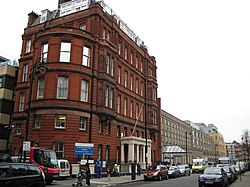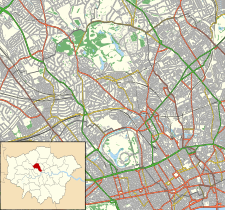| Great Ormond Street Hospital | |
|---|---|
| Great Ormond Street Hospital for Children NHS Foundation Trust | |
 The view along Great Ormond Street | |
| Geography | |
| Location | Great Ormond Street, London, England |
| Coordinates | 51°31′21″N 0°07′14″W / 51.5225°N 0.1205°W |
| Organisation | |
| Care system | National Health Service |
| Type | Teaching |
| Affiliated university | University College London |
| Services | |
| Emergency department | No |
| Beds | 389 |
| Speciality | Children's hospital |
| History | |
| Opened | 14 February 1852 |
| Links | |
| Website | www |
Great Ormond Street Hospital (informally GOSH, formerly the Hospital for Sick Children) is a children's hospital located in the Bloomsbury area of the London Borough of Camden, and a part of Great Ormond Street Hospital for Children NHS Foundation Trust.
The hospital is the largest centre for child heart surgery in Britain and one of the largest centres for heart transplantation in the world. In 1962 it developed the first heart and lung bypass machine for children. With children's book author Roald Dahl, it developed an improved shunt valve for children with hydrocephalus, and non-invasive (percutaneous) heart valve replacements. Great Ormond Street performed the first UK clinical trials of the rubella vaccine, and the first bone marrow transplant and gene therapy for severe combined immunodeficiency.[1]
The hospital is the largest centre for research and postgraduate teaching in children's health in Europe.[2]
In 1929, J. M. Barrie donated the copyright to Peter Pan to the hospital.
- ^ Breakthroughs "Breakthroughs | Great Ormond Street Hospital". Archived from the original on 27 January 2016. Retrieved 21 January 2016.
- ^ "Britain's best hospitals: A patients' guide". The Independent. 20 March 2008. Archived from the original on 8 October 2016. Retrieved 13 October 2016.
